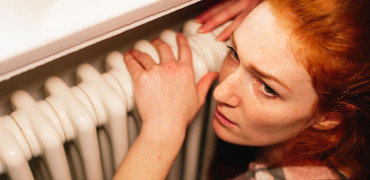The skills of heating engineers and plumbing professionals have become more highly valued in recent years, as householders seek to save on their energy bills and the country looks to reduce its carbon emissions.
Perhaps reputations could be further enhanced by addressing another field of expertise which is vital to our health and general wellbeing.
While it has long been recognised that pollution can be detrimental to health and the environment, it is only relatively recently that the importance of indoor air quality (IAQ) has started to be taken seriously.
The pandemic and the need to make buildings more resilient to airborne virus transmission have helped to highlight the importance of better ventilation, while the shocking death of two-year-old Awaab Ishak in 2020 provided proof of the potentially fatal consequences of living with damp and mould in the home.
There’s a gap in the market for those who can deliver a whole-house approach to heating and ventilation
Five times the risk
Given that most of us spend the great majority of our time indoors, and pollutants are up to five times more concentrated in indoor air than outdoors, it is not surprising that the risk of exposure to poor IAQ is likely to be many times more than that from the outside world.
However, polluted air in the atmosphere also has a big impact on the quality of the air we breathe within our homes and public buildings – something made only too clear to the citizens of New York who had to deal with the toxic air and plumes of smoke caused from the recent Canadian wildfires.
According to the World Health Organisation (WHO), household air pollution was responsible for an estimated 3.2 million deaths per year in 2020, including over 237,000 deaths of children under the age of five.
WHO has identified that these fatalities are the consequence of several diseases caused by exposure to contaminated air within the home, including respiratory diseases, strokes, heart failure and lung cancer.
Various studies have also confirmed that poor IAQ can be detrimental to our mental health and can even be a cause of dementia.
Radon – an odourless, colourless, and tasteless air pollutant formed by the natural decay of uranium from rocks and soil – has been shown to be a cause of lung cancer, but it is only one of many indoor air pollutants that can have damaging effects on our health.
Ultra-fine pollutants such as particulate matter in dust and dirt, as well as gases such as carbon monoxide and sulphur dioxide can penetrate from outdoors and can also be generated inside our homes from activities such as cooking.
A greater need for ventilation
Research undertaken on behalf of WHO has primarily focussed on poorer households around the world, who are more likely to be reliant on open fires and stoves for cooking and hot water.
However, here in the UK, inadequate ventilation has been seen to be an issue that hits both those who live in social housing and higher income property owners.
With energy efficiency measures, such as insulation, being retrofitted to the existing housing stock and new homes built to ever higher levels of energy efficiency, it is now widely accepted that there is a much greater need for effective ventilation.
So, who is best placed to provide expert advice on how properties can be better ventilated?
Manufacturers have historically looked to promote their products to a mix of trade professionals, including electricians, plumbers, heating engineers and general builders.
Despite encouragement from the sector, there are few ventilation installation specialists, which suggests there’s a gap in the market to those companies who can deliver a whole-house approach to heating and ventilation, presenting solutions that are able to balance good indoor air quality with higher standards of energy use.
A significant opportunity
The need for such a balancing act has been recognised by the most recent update to Part F of the Building Regulations which came into force in June last year.
It provides some clarity on when the addition of energy efficiency measures are likely to trigger the need for ventilation to be improved.
It has been estimated that a family of four can create as much as 24 pints of moisture in a day, so it stands to reason that making homes more airtight is only going to raise the risk of damp and mould unless effective ventilation measures have been addressed.
For installers, the regulations provide an opportunity to expand their ventilation services while also improving the health of their customers.
Plumbers and heating engineers have of course long played a significant part in helping to save lives by the installation of efficient and reliable sanitation services, but some might argue that the number of unnecessary deaths that could be avoided by an improvement in indoor air quality could be even greater.
Chris Jones is editor of Plumbing, Heating and Air Movement (PHAM) News



